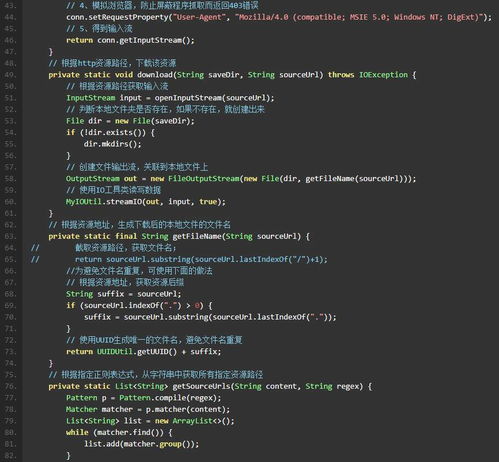c语言英文,Introduction to C Programming Language
C语言(C Programming Language)是一种通用的、过程式的编程语言,广泛应用于系统软件、嵌入式软件以及一些高级应用软件的编写。它由Dennis Ritchie在1972年设计,最初用于编写UNIX操作系统。C语言具有高效、灵活和可移植性强的特点,因此被广泛应用于各种操作系统、编译器、数据库和通信系统等领域。
C语言的标准是由ISO/IEC 9899:2018定义的,这个标准规定了C语言的核心语法、库函数和标准输入输出等。C语言是一种静态类型语言,这意味着在编译时需要指定每个变量的类型。C语言支持多种数据类型,包括整型、浮点型、字符型、数组、指针和结构体等。
C语言的主要特点包括:
1. 简洁性:C语言的设计目标之一是简洁性,它只包含最基本的语法和库函数,这使得C语言易于学习和使用。
2. 可移植性:C语言是一种可移植性强的语言,它可以在不同的计算机平台上编译和运行。这得益于C语言标准库的设计,它提供了一套与平台无关的函数。
3. 高效性:C语言是一种高效的编程语言,它允许程序员直接操作计算机硬件,从而实现更高的性能。
4. 灵活性:C语言提供了丰富的数据类型和控制结构,使得程序员可以根据需要灵活地编写代码。
5. 可扩展性:C语言支持模块化编程,程序员可以将代码分成多个模块,每个模块负责不同的功能。这有助于提高代码的可读性和可维护性。
6. 库函数:C语言标准库提供了一组丰富的库函数,这些函数可以帮助程序员实现各种常见功能,如输入输出、字符串处理、数学计算等。
7. 编译型语言:C语言是一种编译型语言,这意味着源代码需要经过编译器的编译才能生成可执行文件。编译器会将源代码转换成机器语言,从而在计算机上运行。
8. 面向过程:C语言是一种面向过程的编程语言,它强调函数和过程的重要性。程序员需要将问题分解成一系列的函数和过程,然后逐步实现。
9. 硬件编程:C语言可以用于硬件编程,如嵌入式系统、微控制器等。这使得C语言在硬件领域具有广泛的应用。
10. 学习曲线:C语言的学习曲线相对较陡峭,因为它需要程序员掌握一定的计算机科学知识和编程技能。但是,一旦掌握了C语言,程序员就可以利用它来编写高效、灵活和可移植的代码。
总之,C语言是一种功能强大、应用广泛的编程语言,它具有简洁性、可移植性、高效性、灵活性、可扩展性、丰富的库函数、编译型语言、面向过程、硬件编程和学习曲线陡峭等特点。这些特点使得C语言成为计算机科学和软件工程领域的重要工具。
Introduction to C Programming Language

C programming language, often referred to as C, is a widely-used programming language that was developed in the early 1970s. It is known for its efficiency, portability, and low-level access to system resources. C is a foundational language for many other programming languages and is still highly regarded in the industry for its robustness and performance.
History and Evolution

Created by Dennis Ritchie at Bell Labs, C was designed to be a system programming language that could be used to write operating systems and other system software. Its development was influenced by the B programming language, which itself was derived from BCPL. Over the years, C has evolved, with the introduction of C , C, and other languages that build upon its foundation. However, C remains a popular choice for systems programming, embedded systems, and performance-critical applications.
Key Features of C

C is known for several key features that make it a powerful and versatile language:
Procedural Programming: C is primarily a procedural programming language, which means it focuses on procedures or functions that operate on data. This approach allows for structured and modular programming.
Low-Level Access: C provides direct access to memory and hardware, making it suitable for systems programming and embedded systems development.
Portability: C code can be compiled on different platforms with minimal changes, making it a portable language.
Efficiency: C is known for its efficiency, as it allows for fine-grained control over memory and system resources.
Rich Standard Library: C comes with a rich standard library that provides a wide range of functions for input/output, string manipulation, mathematical operations, and more.
Basic Syntax and Structure
Understanding the basic syntax and structure of C is crucial for any programmer. Here are some fundamental elements:
Variables: Variables are used to store data in C. They are declared with a type and a name, and can be used to hold values of different data types, such as integers, floats, and characters.
Control Structures: Control structures, such as if-else statements and loops (for, while, do-while), are used to control the flow of execution in a program.
Functions: Functions are blocks of code that perform specific tasks. They can be defined by the programmer and called from other parts of the program.
Pointers: Pointers are variables that store the memory address of another variable. They are a fundamental concept in C and are used extensively in low-level programming.
Applications of C
C is used in a wide range of applications, including:
Operating Systems: C is used to write the core components of many operating systems, such as Linux, Windows, and macOS.
Embedded Systems: C is commonly used in embedded systems development, where performance and low-level access to hardware are critical.
Game Development: Many game engines are written in C, as it allows for high-performance graphics and physics simulations.
Networking: C is used in networking applications, such as web servers and routers, due to its efficiency and low-level access to system resources.
Learning Resources
Learning C can be a rewarding experience, and there are many resources available to help beginners and experienced programmers alike:
Books: There are numerous books available on C programming, ranging from introductory texts to advanced guides.
Online Courses: Many online platforms offer courses on C programming, from basic syntax to advanced concepts.
Documentation: The official C documentation is a valuable resource for understanding the language's specifications and standards.
Community Forums: Joining online communities and forums can provide support and guidance from fellow programmers.







